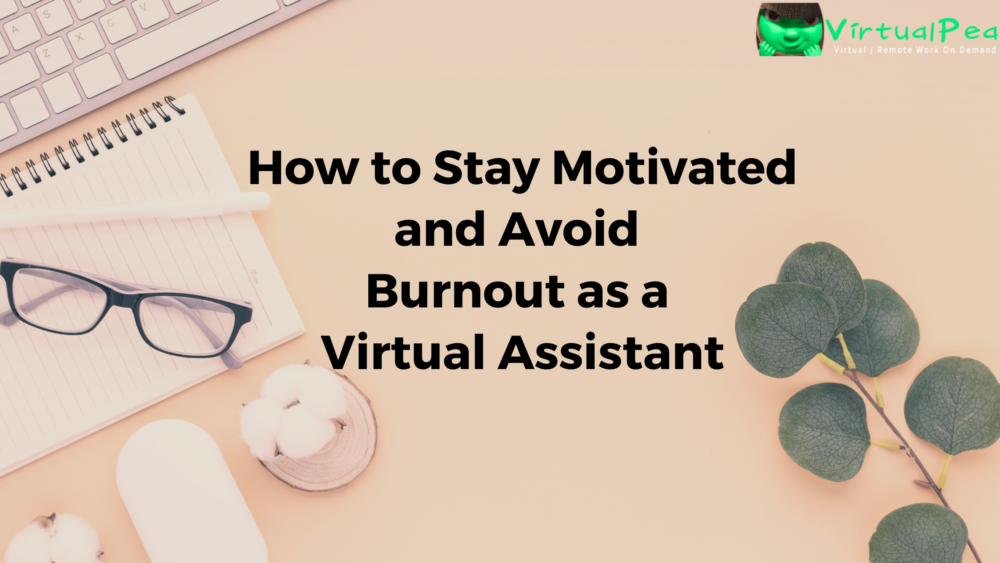
As the virtual assistance industry continues to grow and evolve, it is crucial for virtual assistants to possess a range of essential skills to succeed in their roles. In 2023, the demands of remote work require virtual assistants to be adaptable, highly skilled in communication, efficient in time management, and technically proficient. In this article, we will explore the key skills that every virtual assistant should have to thrive in the dynamic landscape of virtual assistance.
1. Effective Communication Skills
Strong communication skills are fundamental to the success of a virtual assistant. Virtual assistants must be proficient in written and verbal communication to effectively collaborate with clients and team members. Clear and concise communication ensures that tasks are understood, expectations are managed, and feedback is conveyed promptly. Active listening, professionalism, and the ability to adapt communication styles to different clients or projects are vital skills for virtual assistants.
2. Time Management and Organization
As a virtual assistant, excellent time management and organizational skills are crucial. Virtual assistants are responsible for juggling multiple tasks, meeting deadlines, and maintaining productivity. Effective time management involves prioritizing tasks, setting realistic goals, and utilizing tools and techniques to optimize productivity. Organizational skills ensure that files, documents, and project details are well-structured and easily accessible, facilitating efficient workflow and seamless collaboration.

3. Adaptability and Flexibility
The remote work landscape is dynamic, requiring virtual assistants to be adaptable and flexible. Clients’ needs may change, new technologies may emerge, and project scopes may evolve. Virtual assistants must be able to adapt quickly to these changes, embrace new processes or tools, and find innovative solutions. An adaptable mindset enables virtual assistants to thrive in a fast-paced and ever-changing environment, offering valuable support to clients.
4. Technical Proficiency
Being technically proficient is a must for virtual assistants in 2023. Virtual assistants should have a solid foundation in various software applications, project management tools, and communication platforms. Proficiency in productivity tools like Microsoft Office or Google Workspace, project management tools like Trello or Asana, and communication platforms like Slack or Zoom is essential. Staying up to date with emerging technologies and continually expanding technical skills is vital for virtual assistants to provide efficient and effective support.
5. Problem-Solving Abilities
Virtual assistants often encounter challenges and obstacles while handling tasks or projects. The ability to think critically and solve problems is a valuable skill in the virtual assistance role. Virtual assistants should be resourceful, proactive, and able to analyze situations to identify solutions. They should be comfortable seeking information, asking questions, and collaborating with team members to overcome obstacles and deliver high-quality work.
To excel as a virtual assistant in 2023, possessing essential skills is crucial. Effective communication, time management, and organizational abilities are foundational skills for success. Adaptability and flexibility enable virtual assistants to navigate the ever-changing remote work environment. Technical proficiency and problem-solving skills enhance efficiency and support clients effectively. Continually honing these skills through professional development opportunities will ensure virtual assistants remain competitive and provide exceptional support to clients.

As a virtual assistant, it’s crucial to prioritize cybersecurity and protect your clients’ sensitive data. With cyber threats on the rise, maintaining the confidentiality and integrity of client information is paramount. In this article, we will explore essential cybersecurity practices for virtual assistants to protect client data. From ensuring secure communication channels to implementing robust password management and data backup strategies, these tips will help you safeguard sensitive information and maintain client trust.
1. Secure Communication Channels
Secure communication is vital for protecting client data. Avoid using unencrypted or public Wi-Fi networks when accessing or transmitting sensitive information. Instead, use encrypted communication tools such as encrypted email services, virtual private networks (VPNs), or secure messaging platforms. Encrypting your communications adds an extra layer of protection and ensures that sensitive data remains confidential.
2. Robust Password Management
Strong and unique passwords are essential to prevent unauthorized access to client data. Avoid reusing passwords across different platforms and use a reliable password manager to securely store and generate complex passwords. Enable multi-factor authentication (MFA) whenever possible to add an extra layer of security. Regularly update and change passwords to mitigate the risk of a potential data breach.

3. Data Backup and Recovery
Implementing a comprehensive data backup and recovery plan is crucial in the event of data loss or cyber attacks. Regularly back up client data to secure and reliable storage solutions, such as cloud-based platforms or external hard drives. Test the restoration process periodically to ensure data integrity. Having a reliable backup strategy minimizes the impact of data loss and enables quick recovery in case of unforeseen incidents.
4. Data Privacy and Confidentiality
Respecting client privacy and confidentiality is fundamental for virtual assistants. Establish clear data privacy policies and obtain client consent before collecting or storing any personal or sensitive information. Implement stringent access controls and limit data sharing only to authorized individuals. Regularly review and update your data privacy practices to align with industry regulations and best practices.
5. Stay Informed about Cyber Threats
Cyber threats constantly evolve, making it essential to stay informed about the latest security trends and vulnerabilities. Regularly educate yourself about common cyber threats such as phishing, malware, or social engineering attacks. Keep your security software and applications up to date to protect against known vulnerabilities. By staying vigilant and proactive, you can minimize the risk of security breaches and protect client data effectively.
As a virtual assistant, protecting client data is a top priority. By implementing essential cybersecurity practices such as secure communication, robust password management, data backup and recovery, and respecting data privacy and confidentiality, you can safeguard sensitive information and maintain client trust. Stay informed about the latest cyber threats, educate yourself, and consistently update your security measures to ensure the highest level of protection for your clients’ data. By prioritizing cybersecurity, you contribute to a safer virtual assistant environment and establish yourself as a trusted and reliable professional.

As a virtual assistant, your home office is the central hub of your productivity and success. Setting up a productive workspace is vital for maintaining focus, efficiency, and achieving a healthy work-life balance. In this article, we will explore essential tips to help you set up a productive home office as a virtual assistant. From creating an ergonomic environment to optimizing organization and minimizing distractions, these strategies will help you maximize your productivity and thrive in your remote work setting.
1. Ergonomic Furniture and Equipment
Investing in ergonomic furniture and equipment is crucial for your physical well-being and long-term productivity. Choose a comfortable chair with proper lumbar support to maintain good posture. Ensure your desk is at a suitable height to avoid strain on your wrists and neck. Consider using an adjustable standing desk to alternate between sitting and standing throughout the day. Additionally, invest in a keyboard and mouse that are ergonomically designed to minimize the risk of repetitive strain injuries.
2. Optimize Organization
An organized workspace promotes productivity and reduces stress. Declutter your desk by keeping only essential items within reach. Use storage solutions such as shelves, drawers, or file cabinets to keep paperwork, supplies, and equipment organized and easily accessible. Utilize cable management solutions to prevent tangled cords and improve the overall aesthetics of your workspace. Establish a filing system for digital files and implement cloud storage solutions for seamless access to documents.

3. Harness Natural Lighting
Natural lighting has a significant impact on mood, energy levels, and productivity. Position your desk near a window to take advantage of natural light. Natural light not only provides better visibility but also helps regulate your circadian rhythm and boosts your overall well-being. If natural light is limited, consider using full-spectrum or daylight-mimicking LED bulbs to simulate natural lighting conditions.
4. Minimize Noise Distractions
Creating a quiet and focused environment is essential for maintaining concentration and productivity. Choose a dedicated workspace away from high-traffic areas or noisy household activities. Use noise-canceling headphones or play background music or ambient noise to mask distracting sounds. Communicate with family members or housemates to establish boundaries and minimize interruptions during your work hours.
5. Personalize and Inspire
Personalize your home office to create a space that inspires and motivates you. Decorate with items that reflect your personality and interests. Add motivational quotes, artwork, or plants to create a positive and uplifting atmosphere. Incorporate elements that spark creativity and inspiration, such as a vision board or a bulletin board to showcase your goals and accomplishments.
Setting up a productive home office as a virtual assistant is essential for maintaining focus, efficiency, and work-life balance. By investing in ergonomic furniture, optimizing organization, harnessing natural lighting, and minimizing noise distractions, you can create a workspace that maximizes your productivity and enhances your overall well-being. Remember to personalize your workspace to inspire and motivate you on your virtual assistance journey. With a well-designed home office, you’ll be well-equipped to excel in your remote work environment and achieve professional success as a virtual assistant.

As a virtual assistant, building strong and long-lasting relationships with your clients is key to your success. Cultivating trust, open communication, and collaboration are essential elements for establishing and maintaining long-term partnerships. In this article, we will explore effective strategies for building enduring relationships with clients as a virtual assistant. From clear communication to demonstrating reliability and being proactive, these tips will guide you in building and nurturing long-term client relationships.
1. Clear and Transparent Communication
Clear and transparent communication is the foundation of a strong client relationship. Establish open lines of communication from the start and ensure that both parties understand expectations, deliverables, and timelines. Regularly provide updates on project progress and promptly address any questions or concerns. Effective communication builds trust and demonstrates your commitment to keeping clients informed.
2. Consistent Reliability
Reliability is a crucial trait that clients look for in a virtual assistant. Deliver on your promises and meet deadlines consistently. Be responsive to client inquiries and requests in a timely manner. When you consistently demonstrate reliability, clients will trust you with important tasks and feel confident in your ability to deliver quality work.

3. Proactive Approach
Go the extra mile by being proactive in anticipating your clients’ needs. Take the initiative to suggest improvements or propose ideas that can benefit their business. Offer insights and recommendations based on your expertise. By proactively adding value, you demonstrate your commitment to helping your clients succeed and solidify your position as a trusted partner.
4. Foster Collaboration
Collaboration is vital in building a strong and long-term client relationship. Actively involve clients in the decision-making process and seek their input and feedback. Encourage open dialogue and actively listen to their ideas and concerns. By fostering a collaborative environment, you build a sense of ownership and jointly work towards shared goals.
5. Provide Exceptional Service
Strive to provide exceptional service that goes above and beyond your clients’ expectations. Pay attention to the details and consistently deliver high-quality work. Seek feedback and make necessary improvements to continuously enhance your services. By consistently exceeding expectations, you demonstrate your dedication to client satisfaction and foster long-term loyalty.
Building long-term relationships with clients as a virtual assistant requires a combination of effective communication, reliability, proactivity, collaboration, and exceptional service. By implementing these strategies and fostering a client-centered approach, you can cultivate lasting partnerships that benefit both parties. Consistently prioritize client satisfaction, and strive to exceed expectations. Building strong client relationships not only ensures repeat business but also leads to valuable referrals and a thriving virtual assistant career.

In today’s fast-paced business environment, finding ways to increase efficiency and streamline operations is crucial for success. One effective strategy is to leverage virtual assistant services, which can provide valuable support to your business, allowing you to focus on core activities. However, with numerous options available in the market, it’s essential to choose the right virtual assistant services that align with your business goals and requirements. In this article, we will explore key factors to consider when selecting virtual assistants, including their qualifications, benefits, and pricing considerations.
1. Define Your Business Needs
Before embarking on your search for virtual assistant services, take the time to clearly define your business needs. Determine the specific tasks and areas where you require assistance, such as administrative tasks, customer support, social media management, or data entry. By identifying your needs, you can narrow down your search and find virtual assistants with the necessary skills and expertise to meet your requirements.
2. Assess Virtual Assistant Qualifications
When evaluating potential virtual assistant services, it’s essential to consider their qualifications and skill set. Look for virtual assistants who possess the expertise and experience relevant to your industry. Check their educational background, certifications, and previous work experience to ensure they have the necessary knowledge and competence to handle the tasks you need assistance with. Additionally, consider their language proficiency, communication skills, and technological abilities, as these qualities are vital for effective collaboration.

3. Evaluate Communication and Availability
Communication is crucial when working with virtual assistant services. Ensure that the virtual assistants you are considering have a reliable and efficient communication system in place. Look for individuals or agencies that provide clear channels for communication, such as email, messaging platforms, or project management tools. Additionally, discuss their availability and working hours to ensure they can align with your business needs, especially if you require assistance during specific time zones or have urgent tasks.
4. Consider Pricing and Flexibility
Virtual assistant pricing models can vary significantly, depending on factors such as experience, location, and the complexity of tasks. Some virtual assistants charge an hourly rate, while others offer packages or project-based pricing. Consider your budget and evaluate the pricing structure of different virtual assistant services to find the right balance between affordability and quality. Additionally, discuss their flexibility in terms of scaling up or down their services based on your business requirements.
5. Seek Reviews and Recommendations
Before making a final decision, seek reviews and recommendations from other businesses or professionals who have utilized virtual assistant services. Their insights can provide valuable information about the reliability, professionalism, and quality of the virtual assistants they have worked with. Online platforms, forums, and social media groups related to virtual assistant services can be excellent resources to connect with others and gather insights.
Choosing the right virtual assistant services can significantly impact your business productivity and efficiency. By defining your needs, assessing qualifications, evaluating communication and availability, considering pricing and flexibility, and seeking reviews, you can make an informed decision. Virtual assistants have the potential to streamline your operations, enhance customer satisfaction, and free up your time to focus on strategic activities. Embrace the power of virtual assistant services and unlock the full potential of your business.

Managing finances is a crucial aspect of running a successful virtual assistant business. As a virtual assistant, it’s essential to establish sound financial practices to ensure stability and optimize your financial success. In this article, we will provide valuable tips for effectively managing your finances as a virtual assistant. From budgeting and invoicing to tax planning and bookkeeping, these tips will help you keep your financial matters organized and set a strong foundation for your virtual assistant business.
1. Create a Budget
Creating a budget is the foundation of financial management. Start by assessing your income and expenses. Determine your fixed costs, such as software subscriptions or internet fees, and variable costs, such as marketing or training expenses. Allocate funds for savings and emergencies. Regularly review and adjust your budget as your business evolves to ensure you are effectively managing your finances.
2. Set Clear Payment Terms and Invoicing Procedures
Establish clear payment terms with your clients to ensure timely and consistent payments. Clearly communicate your rates, payment due dates, and preferred payment methods. Use professional invoicing tools or templates to streamline the invoicing process. Include detailed descriptions of the services provided, the agreed-upon rates, and any applicable taxes. Regularly follow up on outstanding payments to maintain a healthy cash flow.

3. Plan for Taxes
As a virtual assistant, it’s essential to plan for taxes and stay compliant with tax regulations. Keep track of your business-related expenses, such as equipment, software, or professional development costs, as they may be tax-deductible. Set aside a portion of your income for tax payments or consult with a tax professional to ensure accurate tax planning and filing. Stay informed about tax deadlines and any changes in tax laws that may affect your business.
4. Maintain Organized Records and Track Expenses
Keeping organized records and tracking your expenses is crucial for effective financial management. Use accounting software or spreadsheets to record income, expenses, and receipts. Categorize your expenses, making it easier to analyze your spending patterns and identify areas for improvement. Regularly reconcile your financial records to ensure accuracy and identify any discrepancies.
5. Seek Professional Help if Needed
If managing your finances becomes overwhelming or complex, consider seeking professional help. A certified accountant or bookkeeper specializing in virtual assistant businesses can provide guidance and assistance in managing your financial affairs. They can help you with tax planning, financial analysis, and ensuring compliance with financial regulations.
Effectively managing finances is essential for the success of your virtual assistant business. By creating a budget, setting clear payment terms, planning for taxes, maintaining organized records, and seeking professional help if needed, you can ensure financial stability and optimize your financial success as a virtual assistant. Implement these tips to keep your financial matters organized and set a strong foundation for your virtual assistant business.

Social media has become a powerful tool for businesses to connect with their audience and build brand visibility. As a virtual assistant, having expertise in social media management is highly valuable. Managing social media platforms effectively requires a strategic approach and staying up-to-date with best practices. In this article, we will explore the best practices for social media management as a virtual assistant. From developing a content strategy to fostering engagement and leveraging analytics, these tips will help you excel in managing social media platforms for your clients.
1. Develop a Comprehensive Content Strategy
A well-defined content strategy is the backbone of successful social media management. Understand your client’s goals, target audience, and brand identity. Create a content calendar outlining the types of content, posting frequency, and themes aligned with the client’s objectives. Plan a mix of engaging and informative posts, including text, images, videos, and relevant hashtags. A consistent content strategy ensures that social media efforts align with the client’s brand and resonate with their audience.
2. Foster Engagement and Community Building
Social media is not just about posting content; it’s also about building relationships and fostering engagement. Encourage conversations by responding promptly to comments, messages, and mentions. Engage with the audience by asking questions, running polls, or hosting contests. Actively participate in relevant communities or groups related to the client’s industry. Building a sense of community and engaging with followers strengthens the client’s brand presence and fosters a loyal following.

3. Leverage Analytics for Data-Driven Insights
Analytics plays a crucial role in social media management. Utilize the analytics tools provided by social media platforms to track key metrics such as reach, engagement, and follower growth. Analyze the performance of different types of content, posting times, and hashtags to identify trends and optimize future strategies. Use data-driven insights to refine your approach, improve content quality, and maximize the client’s social media impact.
4. Schedule Posts for Consistency
Consistency is key in social media management. Use scheduling tools like Hootsuite, Buffer, or Sprout Social to plan and schedule posts in advance. This ensures a regular and consistent presence on social media, even when you’re occupied with other tasks. Schedule posts during peak times when the client’s audience is most active, maximizing reach and engagement. Regularly monitor scheduled posts to make any necessary adjustments or timely responses.
5. Maintain Branding and Voice
Maintaining consistent branding and voice across social media platforms is essential for building a recognizable and cohesive online presence. Understand the client’s brand guidelines, including colors, fonts, and tone of voice. Ensure that the client’s brand elements are incorporated into social media visuals, captions, and interactions. Consistent branding helps establish trust, strengthens brand recognition, and enhances the client’s overall online image.
Effective social media management is a valuable skill for virtual assistants. By developing a comprehensive content strategy, fostering engagement, leveraging analytics, scheduling posts for consistency, and maintaining branding and voice, you can excel in managing social media platforms for your clients. Implementing these best practices will help you build a strong online presence, drive audience engagement, and contribute to the client’s overall social media success. Stay updated with the latest trends and continuously refine your social media management skills to provide exceptional services as a virtual assistant.

As a virtual assistant, staying motivated and avoiding burnout is essential for maintaining productivity and job satisfaction. The nature of remote work can sometimes lead to challenges such as isolation, overworking, or lack of boundaries. However, with the right strategies in place, you can overcome these hurdles and thrive in your role. In this article, we will explore effective techniques to stay motivated and prevent burnout as a virtual assistant. From achieving work-life balance to practicing self-care and implementing productivity techniques, these tips will help you sustain motivation, avoid burnout, and excel in your virtual assistant career.
1. Set Clear Goals and Priorities
Setting clear goals and priorities is crucial for staying motivated as a virtual assistant. Define what you want to achieve in your role and break down your goals into actionable steps. Prioritize tasks based on importance and deadlines, focusing on high-value activities that align with your objectives. Having a clear direction and purpose will keep you motivated and focused on meaningful work.
2. Maintain Work-Life Balance
Maintaining a healthy work-life balance is vital to prevent burnout. Set boundaries between your work and personal life, establishing specific work hours and designated areas for work. Avoid working excessively long hours and allow yourself time for relaxation, hobbies, and spending time with loved ones. By maintaining a balance, you can recharge, avoid burnout, and bring more enthusiasm to your work.

3. Practice Self-Care
Self-care plays a significant role in sustaining motivation and avoiding burnout. Take care of your physical and mental well-being by getting regular exercise, eating nutritious meals, and getting enough sleep. Engage in activities that bring you joy and help you relax, such as practicing mindfulness, reading, or pursuing hobbies. Prioritize self-care as an integral part of your routine to enhance your overall well-being and maintain a positive mindset.
4. Implement Productivity Techniques
Implementing productivity techniques can help you stay motivated and manage your workload effectively. Break tasks into smaller, manageable chunks, and use time-blocking to allocate specific periods for focused work. Prioritize your most important tasks and minimize distractions by turning off notifications or using productivity apps. Experiment with different techniques, such as the Pomodoro Technique or the Eisenhower Matrix, to optimize your productivity and maintain motivation.
5. Seek Support and Stay Connected
Virtual work can sometimes feel isolating, so it’s important to seek support and stay connected with others. Join virtual assistant communities or networking groups to connect with peers and share experiences. Engage in online forums, attend webinars or conferences, and participate in virtual assistant communities on social media platforms. Collaborate with other professionals, seek mentorship opportunities, and leverage the power of networking to stay motivated and inspired.
Staying motivated and avoiding burnout as a virtual assistant requires a proactive approach.

Virtual assistants have become an integral part of our daily lives, both personally and professionally. As we step into 2023, the future of virtual assistants looks promising, with exciting advancements on the horizon. From AI-powered assistants and voice technology to automation and personalized experiences, this article delves into the trends and predictions shaping the virtual assistant landscape in the year ahead. Discover how these developments will impact remote work, enhance productivity, and revolutionize the way we interact with virtual assistants.
1. AI-Powered Virtual Assistants
Artificial intelligence (AI) continues to evolve and enhance virtual assistants. AI-powered virtual assistants employ sophisticated algorithms, natural language processing (NLP), and machine learning to understand and respond to user queries more accurately. These advancements enable virtual assistants to provide personalized and context-aware assistance, offering a more intuitive and seamless user experience.
2. Voice Assistants and Voice Technology
Voice technology is gaining immense popularity, and voice assistants are becoming more prevalent in our daily lives. Virtual assistants like Amazon Alexa, Google Assistant, and Apple’s Siri are revolutionizing the way we interact with technology. Voice assistants offer hands-free control and a more natural interface, allowing users to perform tasks, access information, and control smart devices through voice commands. As voice recognition technology continues to improve, voice assistants will play an increasingly significant role in our personal and professional lives.

3. Automation and Task Delegation
Automation is reshaping the virtual assistant landscape, enabling repetitive tasks to be delegated to virtual assistants. Robotic Process Automation (RPA) and task automation tools automate time-consuming and mundane tasks, freeing up human virtual assistants to focus on more complex and strategic responsibilities. This shift allows virtual assistants to provide higher value-add services, improving efficiency and productivity for businesses.
4. Personalized Experiences and Customization
Virtual assistants are becoming more personalized, adapting to individual preferences and delivering tailored experiences. Machine learning algorithms analyze user behavior and data to understand individual needs, anticipate requirements, and offer personalized recommendations. Customization options will become more prevalent, allowing users to personalize their virtual assistant’s voice, appearance, and functionality to suit their preferences.
5. Integration and Ecosystems
Virtual assistants are increasingly integrating with other applications, platforms, and smart devices to create interconnected ecosystems. Integration with productivity tools, project management software, customer relationship management systems, and smart home devices enables virtual assistants to seamlessly assist users across various aspects of their lives. This integration enhances efficiency, promotes cross-platform collaboration, and creates a more unified user experience.
The future of virtual assistants in 2023 holds immense potential for transforming the way we live and work. AI-powered assistants, voice technology, automation, personalized experiences, and integration are among the key trends shaping the virtual assistant landscape. These advancements will provide more intuitive, context-aware, and personalized interactions, leading to enhanced productivity, streamlined workflows, and improved remote work experiences. As virtual assistants continue to evolve and become more ingrained in our daily lives, their impact will extend beyond routine tasks, empowering individuals and businesses to achieve new levels of efficiency and success.

As a virtual assistant, managing multiple clients efficiently is key to maintaining a successful freelance business. Juggling various tasks, deadlines, and client expectations can be challenging, but with the right strategies, you can achieve a harmonious balance. In this article, we will explore effective tips and techniques for balancing multiple clients as a virtual assistant. From mastering time management and multitasking to staying organized and prioritizing tasks, these practices will help you optimize your workflow, deliver exceptional service, and thrive in managing multiple client demands.
1. Master Time Management
Effective time management is crucial for balancing multiple clients. Start by creating a comprehensive schedule or calendar to track your tasks and deadlines. Prioritize your assignments based on urgency, importance, and client expectations. Allocate dedicated time blocks for each client to ensure you can focus on their specific needs. Utilize productivity tools, such as time-tracking apps or project management software, to help you stay organized and accountable.
2. Embrace Multitasking (Within Reason)
While multitasking can be beneficial in managing multiple clients, it’s essential to find a balance and avoid overwhelming yourself. Identify tasks that can be combined or executed concurrently, such as responding to emails while running software updates or conducting research for multiple clients simultaneously. However, be mindful not to sacrifice the quality of your work by taking on too many tasks at once. Find a rhythm that allows you to work efficiently without compromising the deliverables.

3. Stay Organized
Maintaining a high level of organization is key when managing multiple clients. Keep track of client information, project details, and deadlines in a centralized system, such as a project management tool or a spreadsheet. Create separate folders or digital files for each client to store relevant documents and communications. Regularly update and review your organizational system to ensure everything is up to date and easily accessible when needed.
4. Prioritize Tasks Effectively
Prioritization is essential when managing multiple client demands. Start by identifying urgent and time-sensitive tasks that require immediate attention. Consider the impact and importance of each task on the overall client relationship and project progression. Break down complex assignments into manageable sub-tasks and establish deadlines for each phase. By setting priorities and adhering to them, you can ensure that critical tasks are completed efficiently and avoid unnecessary stress.
5. Communicate Clearly and Proactively
Open and effective communication is vital in managing multiple clients. Be proactive in sharing progress updates, clarifying expectations, and managing client timelines. Set clear boundaries regarding your availability and response times, ensuring that clients understand when and how to reach you. Foster transparent and regular communication channels, such as email or project management tools, to streamline collaboration and maintain transparency across all client interactions.
Balancing multiple clients as a virtual assistant requires a combination of effective time management, multitasking, organization, prioritization, and clear communication.
